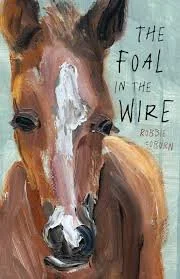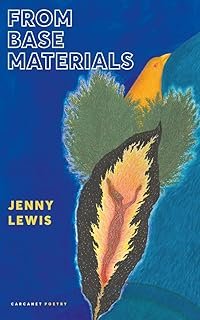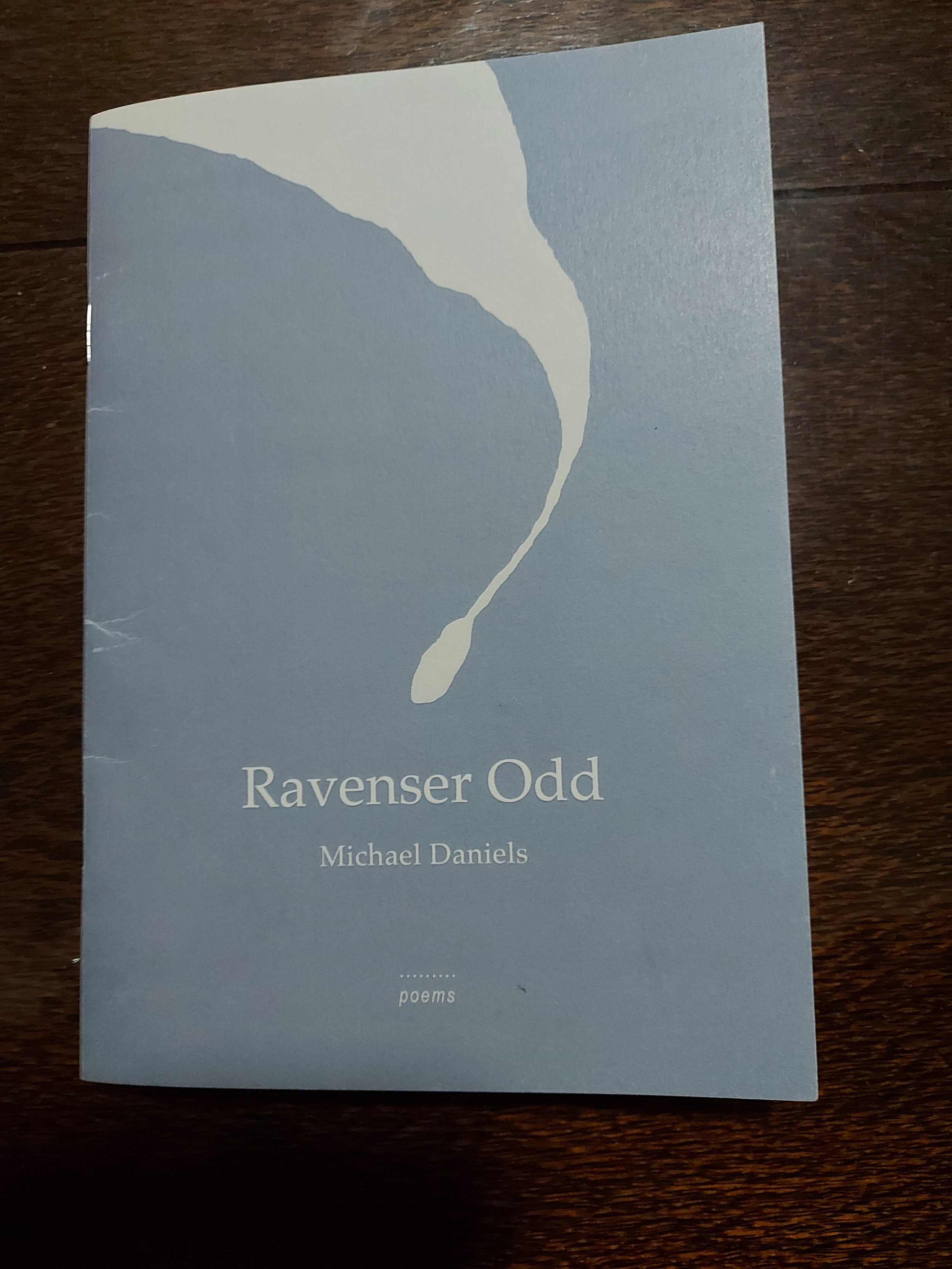Robbie Coburn’s The Foal in the Wire (Lothian, 2025, 121 pages)
This review originally appeared in The Brazen Head in July 2025.
Set in rural Australia The Foal in the Wire is a book length narrative of short, individually titled poems.
The story is told by Sam, an adolescent boy. One night he finds a foal caught in a barbed-wire fence. He and his neighbour’s daughter, Julia, save the injured animal. As they help it regain its health, they draw closer together. Sam’s parents’ marriage is falling apart; he’s bullied at school, and Julia’s father is an abusive drunk. Some things are resolved: some can’t be.
Australia has a tradition of narrative poetry that shows how rich and varied the ‘verse novel’ can be. The three best known, Dorothy Porter’s The Monkey’s Mask, Les Murray’s Fredy Neptune, and Alan Wearne’s The Lovemakers, demonstrate different ways a writer could approach ‘narrative verse’. They are all book-length stories, their lines don’t go all the way to the right margin, and they are marketed as poetry. Their differences are greater than these similarities. Porter’s narrator, Jill, is the literary granddaughter of Raymond Chandler’s Philip Marlowe. Told as a sequence of short, free verse poems, Porter’s lines and images create a modern, laconic private eye. Fredy Neptune is a masterclass in controlled rhythm, and the story, progressing through tightly controlled eight-line stanzas, reads like a picaresque novel. Wearne’s The Lovemakers, with its huge cast of characters, written in a variety of verse forms, reads like nothing and no one else and at 800 pages is one of the longest verse narratives
At the same time, staying in Australia, there’s a tradition of verse novels aimed at what is now described as the Young Adult market. Pioneered by writers like Steven Herrick, whose A Place Like This still reads well after thirty years, these books range from Herrick’s teenagers trying to find their place in modern Australia to work as different in both form and content as the dystopian science fiction of Lisa Jacobsen’s The Sunlit Zone.[i]
The Foal in the Wire, aimed at the YA market, sits comfortably in such company. It would make an excellent short story. The question anyone writing narrative poetry is forced to confront, sooner or later, is why not write the story in prose? Part of the answer, as suggested above, is that there is a range of techniques for organising words and creating effects with words which are available to someone writing verse.
Coburn has chosen to make little use of those resources. If organised sound is the essential characteristic of poetry, there’s little poetry in the book
The Foal in the Wire opens:
As I run down the veranda steps
in the dark
I can still hear them screaming
at each other
inside the house.
he doesn’t love her
and she doesn’t love him
but they stay.
‘Foal’
Read aloud, I can’t hear a significant difference if the lines were written out as prose.
As I run down the veranda steps in the dark, I can still hear them screaming at each other inside the house. he doesn’t love her and she doesn’t love him but they stay.[ii]
It is very popular stye of verse. The internet is awash with poets who write declarative sentences chopped into short lines. Some of them have had astonishing commercial success.[iii] For anyone brought up on this kind of poetry, and that includes many of the current YA market accessing poetry outside of school, Coburn’s style is going to be immediately familiar and comfortable.
In short poems, the style has very little to commend it. It sounds like a clumsy effort to plunk ‘Three Blind Mice’ on a Stradivarius which has recently been used by a virtuoso to play Bach’s Solo Partitas for violin.
However, as Coburn’s poem in the Brazen Head for Spring 2025 suggest, style here is a choice, a balancing of possible loss and gain, and such a plain style has definite advantages when used to write narrative verse.
No one speaks in poetry but it’s easy to imagine someone telling this story. If Sam were speaking in iambic pentameter or tightly controlled Spenserian stanzas, littering his story with clever literary allusions, he would not sound like a lost teenager in rural Australia.[iv]
The other major advantage is pace. The story moves with the inevitability of a folk tale or a parable. Like a folk tale it can deal with cruelty and loss without romanticising or sensationalising either.
Like a folk tale there is a characteristic blend of the general and the specific. Small details give the story credibility while there is an absence of details that would identify where and when the story takes place. The Foal in the Wire is located somewhere in rural Australia, on two properties that run horses. There is little to fix when the story happens. Having moved away, Julia writes a letter and sends it through the post. Although she and Sam take the bus to school, they don’t use computers or phones to communicate.[v]
Balanced against this is a careful use of detail making the story believable :
Sam sneaking out at night:
making sure to stay on the clover
lining the sides of the path
to avoid the potholes and depressions
left in the ground by horses.
(‘Furtive’)
tells us he’s done this many times. Both children, having watched their fathers, know how to help the foal.
Julia has bought another bottle of formula
and I have a bundle of hay
I gathered
from inside the shed.
dad won’t notice.
whenever hay is lifted
stalks fall from the bale
and gather on the floor.
‘Waiting’
Style allows the story to become its own metaphor. The foal is both a particular foal, and a symbol of those who are damaged and survive. None of this needs to be underlined or emphasised.
It would be a brave writer, especially in a first book, who trusted the reader enough to let the story do all the work. And ‘story’ isn’t everything. The book has a therapeutic potential. It’s offering its readers a realistic message of hope. Coburn occasionally gives those readers a gentle nudge towards the preferred reading as the narrative unfolds but comes close to labouring the point at the end.
The story ends at ‘After’, which concludes:
I want to write down everything
about my brother and Julia and the foal
I am no longer ashamed of who I am
and where I come from.
I can hold on and be anyone.
Two poems follow and both make the same point without adding to the story. The last piece, ‘Wounded Animal’ ends:
Maybe this
scarred and haunted body
is enough--
the wounded animal
is capable of survival.
If this seems to be restating what was already obvious, it is in keeping with the narrator’s character in a book aimed at adolescent readers and dedicated ‘for those who are wounded and surviving’.
There is a contemporary tendency to read poetry through the life of the writer. To claim that the writing is ‘authentic’, ‘raw’[vi] or ‘based on experience’, can set up a defence which frames any criticism as cruel, irrelevant or a personal attack on the writer.[vii]
But as made art, published and offered to strangers, what should matter is the quality of the product. No matter how intense the experience, or the emotion it engenders, once it’s written down and offered to a stranger, it is an unpleasant fact that even trauma is a cliché of life and literature. The more literate the reader, the greater the chance they’ve read versions of this story before. As humans we sympathise with people who suffer, but readers deserve something more for their money than a stranger telling them how bad their life was.
In the wrong hands The Foal in the Wire would be a string of YA Fiction cliches: a family disintegrating after the death of a child, a narrator lost, isolated, contemplating suicide, bullied at school; first love; first sexual experience; a drunk abusive father; some form of reconciliation.
What is therefore most impressive about Coburn’s handling of his material is that at no stage does his book read like a string of clichés. ‘First Time’ is that rare piece of writing, a description of a first sexual encounter that doesn’t sound coy, crude or clinical. It manages to capture the baffling nature of the experience:
like holding a body
and cradling a ghost
at the same time.
Bunting’s injunction: ‘Emotions first- but only facts in the poem’ might be too austere for a modern audience, but Coburn’s book comes close. There is no self-pity, no attempts to exaggerate the horror of the situation and no unrealistic Hollywood ending in which everything is made good and Sam and Julia live happily ever after, running their own shelter for abused horses.
Whether or not the story is based on lived experience, Coburn’s triumph is to make it believable.
Notes:
[i] The list of book length narratives could be extended, but these five examples give some idea of their variety. Verse novel is no more a genre than prose novel.
[ii] This review was written with an uncorrected proof copy so quotations may vary in the final, published version. In the version I used sentences within poems consistently begin without a capital letter.
[iii] Why readers buy books containing poems they themselves could have written while they were still at high school is one of life’s mysteries.
[iv] This is not to suggest that there are no literary teenagers in rural Australia. One of the criticisms levelled against Fredy Neptune was that its central character was too eloquent.
[v] There are possible reasons for a lack of phones and computers but their absence adds to the effect.
[vi] Although it seems I’m in the minority, ‘raw’, when applied to writing, is not a compliment. It suggests a lazy chef slapping uncooked food on the diners’ plates and leaving them to do his or her job.
[vii] The other version of this is to dismiss the writing without reading it because ‘everyone knows’ the writer is guilty of unacceptable behaviour, beliefs or opinions. Both popular extremes tend to ignore the actual writing.







